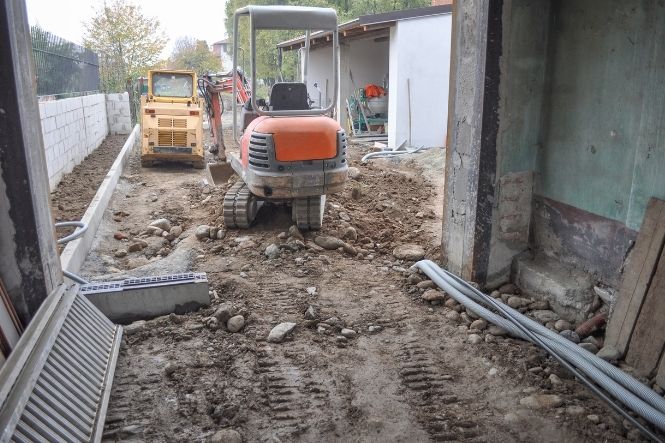Creating a new driveway is a relatively simple job and many homeowners are confident of tackling it themselves. But there’s perhaps more to it than meets the eye, from the bewildering choice of materials available to layout options and potential planning issues. This article will help you put it all into perspective and select the right materials and methods.
If you are simply replacing a straightforward driveway from the road to your garage, perhaps only one car’s length long, then there aren’t going to be too many options in terms of layout and design. There’s unlikely to be any planning issues either, as long as you stick to the original layout and the kerb is already dropped to allow cars to drive over it.
Look for Problems
If the surface needs replacing before its time, it’s worth trying to find out why that’s happened and what you might do to make the new surface last longer. Look at it from a variety of angles to see if there’s a Subtle Gradient, as it might not be draining properly. Does rain water pool in a section that’s more worn than the rest, or is the damage more evident near the garage guttering or close to another drain?
Drainage Issues
Water is a drive’s worst enemy regardless of material and construction, particularly in the winter when the cold will freeze and expand trapped water. When it thaws the water will drain away, taking minute particles with it and creating weak spots which will eventually create holes or bare patches. Therefore, Drainage Needs To Be Carefully Considered whatever the shape and length of a driveway.
Look at Layouts
If you have more land around your home, you will have more options, and the layout of the new driveway will be more important. If the drive is associated with a new garage in a new position, you’ll obviously want to reach that, but can you also make the drive part of a path system to the front or back door? If you’re on a busy road, can you fit a turning circle or dogleg in the front garden so that you can turn round and go back out on to the road facing forward?
Perhaps you have a corner plot and want to change the road that your driveway comes out on? This will need a bit more thought as the kerb should really be lowered and you’ll need permission for that. See our article on Planning Permission in this section for more details.
Keep Everyone Informed
Most driveways will need an element of Excavation before the supporting layers and final surface are added, so it’s wise to keep your neighbours informed. You may need to ask them to keep the pavements clear either side of, or opposite to, your property to allow for access for deliveries and taking waste material away. And you might also have to find a place to park your car or cars until the new drive is ready to be parked on.
It’s also worth letting neighbours know what days you’ll be doing the work, particularly if you’re laying a surface like tarmac that smells while it’s being applied. Getting on with your neighbours is very important, and the more you keep them informed the better.


